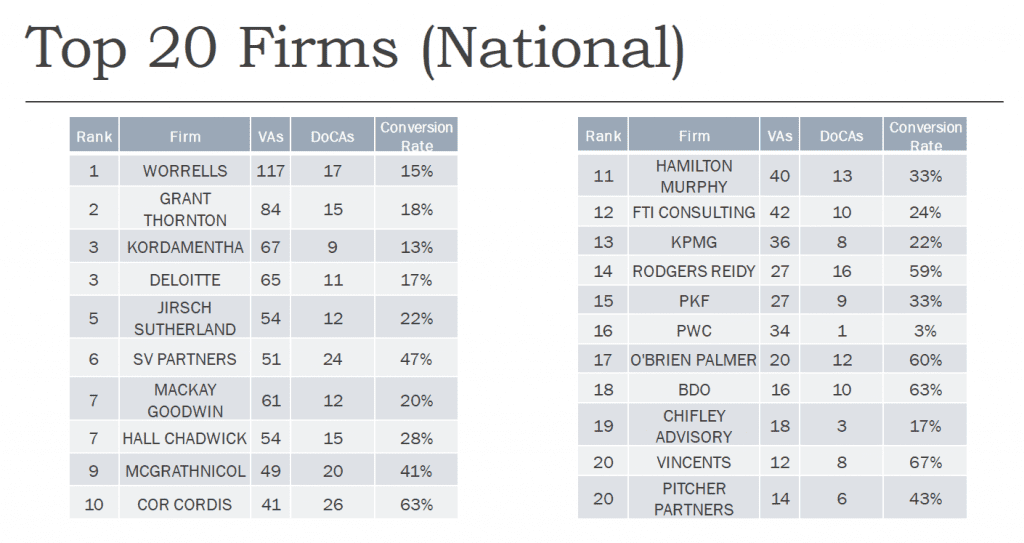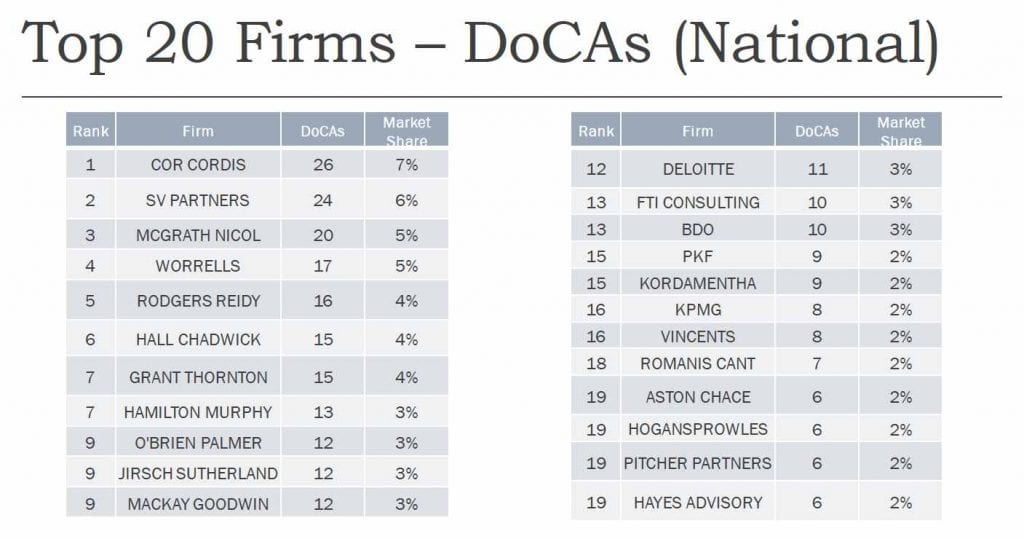Sivaa Consulting’s latest number crunching exercise landed on iNO’s desk this week and its focus on FY 2020 VA to DoCA conversion rates is well timed.
The insolvency profession is breathlessly awaiting details in respect of the brave new restructuring regime being proposed by the Federal Government.
It’s a regime which is itself a response to the economic value destruction wrought by governments state and federal which were left with few choices in how they responded to the COVID-19 corona virus pandemic.
In its FY20 VA vs DoCA Comparison Report, Sivaa Consulting has delved into the data published by ASIC to produce a set of tables and graphs showing VA to DoCA conversion ratios from July 1, 2019 to June 30, 2020.
Numbers illustrating how the formal restructuring regime introduced in the 1993 performs might offer useful insights once data becomes available into the take up rate and operation of the Federal Government’s proposed Small Business Restructuring, debtor-in-possession process.
The numbers also show individual firms how they performed in 2019/20 in terms of their stewardship of companies subject to the formal restructuring process.

Sivaa Consulting calculated the national average conversion rate at 29.18 per cent based on there being 1,292 VAs and 377 DoCAs in 2019/2020.
It then used the DoCA numbers to calculate market share. A table illustrating the national figures is below, revealing Cor Cordis just edging out SV Partners.

There are some aberrant results of course, with FTI Consulting’s West Australian practice managing a conversion rate of 800 per cent thanks to its sole VA in the period spawning eight DoCAs. To see state by state results you’ll need to download the report via: https://www.sivaa.com.au/va-vs-doca-comparison-report
Support INO’s continued chronicling of the insolvency sector.


Hard to know whether you’re comparing apples with apples due to timing differences e.g. as a result of extensions of convening periods and the like.
There are no statistics on the number of DOCAs entered into which were terminated or finalised in accordance with terms